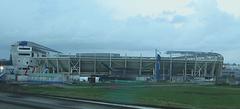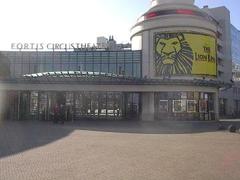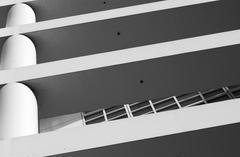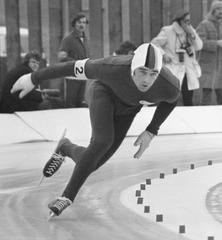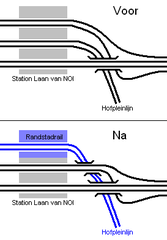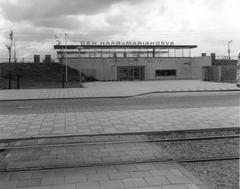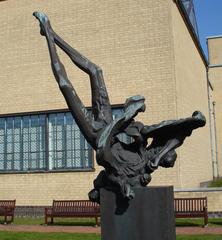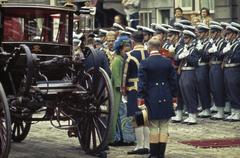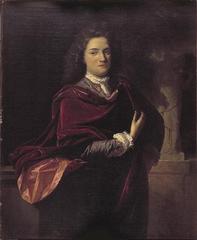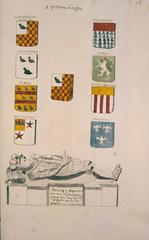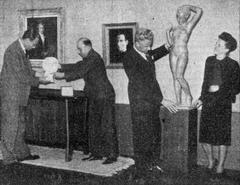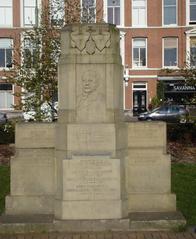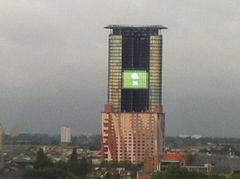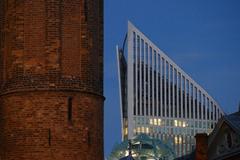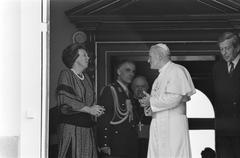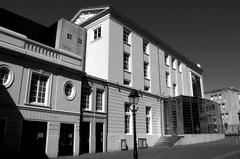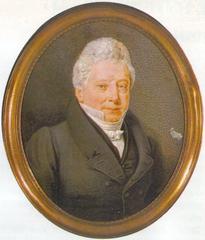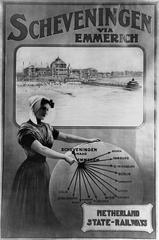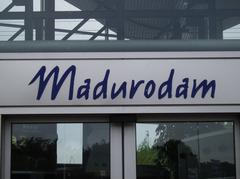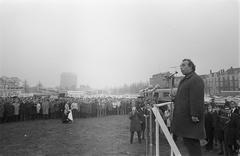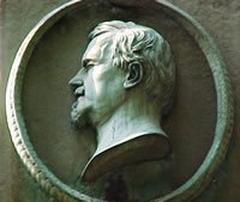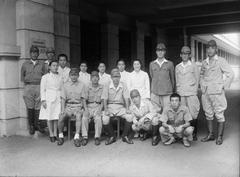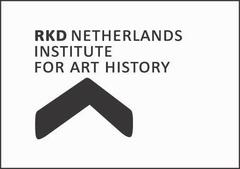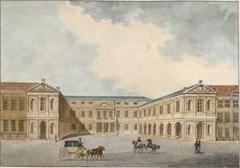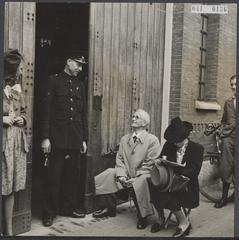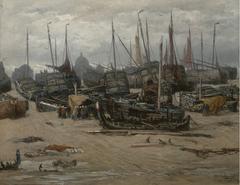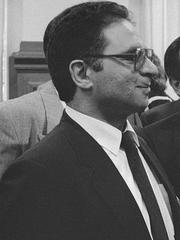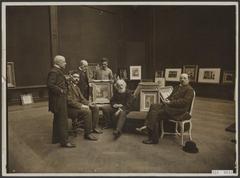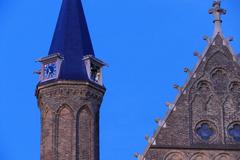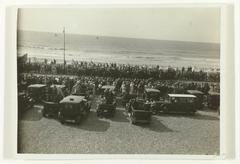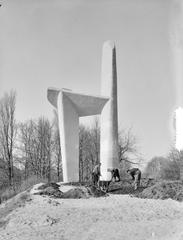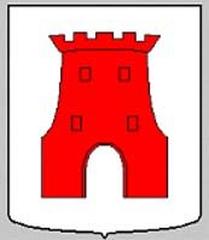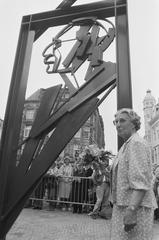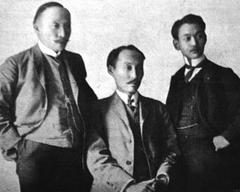
Torentje Visiting Hours, Tickets, and Historical Significance Guide
Date: 03/07/2025
Introduction to the Torentje and Its Importance
The Torentje—Dutch for “The Little Tower”—is an enduring symbol of Dutch political history and governance, nestled at the edge of The Hague’s Binnenhof complex and overlooking the tranquil Hofvijver pond. Dating back to the early 14th century, this octagonal brick tower has transformed from a private summer pavilion for the Counts of Holland into the official office of the Dutch Prime Minister since 1982. The Torentje’s understated Gothic and Renaissance features reflect the Netherlands’ tradition of pragmatic, accessible governance.
Though not currently open to the public due to ongoing renovations and its governmental function, the Torentje remains a focal point for visitors exploring The Hague. This guide provides a comprehensive overview of the Torentje’s historical evolution, architectural highlights, political significance, and practical advice for visitors, including viewing spots, accessibility, and tips for making the most of your visit during the renovation period.
For up-to-date visitor information and renovation updates, refer to official tourism and government resources (Wikipedia, Den Haag, The Hague Official Tourism).
Table of Contents
- Introduction
- Historical Background and Architectural Features
- Political and Cultural Significance
- Visiting the Torentje: Hours, Tickets & Tips
- Practical Tips and FAQs
- Conclusion and Travel Suggestions
- Sources and Further Reading
Historical Background and Architectural Features
Origins and Early History
The Torentje first appears in historical records in 1354 but was likely constructed in the early 14th century as a zomerprieel (summer pavilion) for the Counts of Holland. Its location beside the Binnenhof and Hofvijver originally offered privacy and scenic views, accessible only by drawbridge—emphasizing its exclusivity and importance (explorecity.life).
Architectural Features
The Torentje is a two-storey, octagonal brick structure that combines medieval modesty with later Gothic enhancements. Large windows, added in the 16th century, provide ample light and picturesque views. The pointed roof, crowned with a decorative finial, reflects a stylistic evolution from defense to ceremony and administration. Arrow slits added during the Eighty Years’ War bear witness to its occasional defensive function.
Internally, the tower comprises two compact floors connected by a narrow staircase, originally designed for private retreat but repurposed over time for administrative use. Since 1982, it has served as the working office of the Dutch Prime Minister.
Historical Functions and Transformations
- Medieval to Renaissance Era: Began as a summer retreat, briefly fortified in wartime.
- 17th–19th Centuries: The adjacent Mauritshuis replaced the count’s garden, integrating the Torentje into the evolving Binnenhof complex.
- Modern Era: Official office of the Prime Minister since 1982, symbolizing Dutch democratic governance (denhaagcityguide.nl).
Political and Cultural Significance
Prime Minister’s Office
As the official seat of the Dutch Prime Minister, the Torentje is the center of executive decision-making. It is used for cabinet meetings, diplomatic receptions, and press briefings, reinforcing its status as a living monument of governance (explorecity.life).
Symbolic and International Role
The Torentje’s understated architecture contrasts with the grandeur of other European government buildings, symbolizing Dutch values of transparency and accessibility (netherlands-tourism.com). Its presence within the Binnenhof—home to the States General—emphasizes the Netherlands’ consensus-driven political culture. The tower also plays a role in international diplomacy, hosting visiting dignitaries and contributing to The Hague’s global reputation as the “City of Peace and Justice” (ifutures.discourse.group).
National Identity and Public Perception
The Torentje is instantly recognizable in Dutch media and is closely associated with the nation’s democratic identity. Its proximity to Noordeinde Palace and use during state occasions highlight the connection between government and monarchy. Public visibility from the Hofvijver and surrounding parks underscores the ethos of open governance (explorecity.life).
Visiting the Torentje: Hours, Tickets & Tips
Current Access and Ticketing
Interior Access:
The Torentje is not open to the public due to its governmental function and the extensive renovation of the Binnenhof complex, expected to continue until at least 2028. As such, there are no tickets or visiting hours for interior access (denhaag.com).
Exterior Viewing:
The Torentje remains visible year-round from public vantage points, most notably from the Hofvijver embankment, Lange Vijverberg, and Buitenhof squares. These areas are freely accessible and offer the best photo opportunities.
Visitor Information Center and Guided Tours
Binnenhof Renovation Information Center:
While interior tours are suspended, the Binnenhof Renovation Information Center at Plaats 22 provides a compelling alternative. Here, visitors can:
- Explore 800 years of Binnenhof history, including the Torentje’s role
- Learn about the renovation process through multimedia exhibits and models
- View archaeological discoveries and historical artifacts
- Attend special exhibitions and meet-the-expert sessions
Opening Hours: Wednesday–Sunday
Admission: Free (thehague.com)
Guided Walking Tours:
While interior tours are unavailable, local organizations such as The Hague Greeters offer exterior walking tours focusing on the history, architecture, and political significance of the Binnenhof and Torentje (nomadicmatt.com).
Viewing Spots and Accessibility
- Hofvijver Pond: Offers iconic views and ideal photo opportunities, especially at sunrise or sunset.
- Lange Vijverberg and Buitenhof: Additional vantage points with nearby cafes and shops.
- Accessibility: The area is pedestrian-friendly and wheelchair accessible, though some construction zones may temporarily limit access (myeuropedays.com).
Transportation
- By Train: The Hague Central Station is a 10-minute walk from the Binnenhof.
- By Tram: Trams 1, 2, and 6 stop at Spui, near the complex.
- By Bus: Several lines stop at ‘s-Gravenhage, Centrum (thrillophilia.com).
- Parking: Museumkwartier Car Park and Q-Park Noordeinde are within walking distance.
Nearby Attractions
- Mauritshuis Museum: Home to Vermeer’s “Girl with a Pearl Earring.”
- Noordeinde Palace: The King’s working palace.
- Peace Palace and Grote Kerk: Other historic landmarks within The Hague’s city center (holidify.com).
Practical Tips and Frequently Asked Questions (FAQ)
Q: Can I enter the Torentje?
A: No, the Torentje is closed to the public due to renovations and its function as a government office.
Q: Are tickets required to visit the Torentje or Binnenhof?
A: No tickets are needed for exterior viewing; interior tours are suspended until renovations are complete.
Q: Where are the best photo spots for the Torentje?
A: The north side of the Hofvijver pond, Lange Vijverberg, and Buitenhof squares offer the best views.
Q: What can I do instead of an interior tour?
A: Visit the Binnenhof Renovation Information Center for interactive exhibits and historical displays.
Q: Is the area accessible for people with disabilities?
A: Yes, public walkways are accessible, though some construction may limit access.
Q: When will the Torentje and Binnenhof reopen?
A: Renovations are ongoing and expected to finish no earlier than 2028. Check official sites for updates.
Conclusion and Travel Suggestions
The Torentje stands as a testament to the Netherlands’ democratic values, architectural heritage, and political continuity. Even during this period of renovation and restricted access, its exterior can be admired from several scenic spots, and the nearby information center provides a wealth of historical context. To enhance your visit, use digital resources such as the Audiala app for self-guided tours, stay updated through official tourism sites, and explore nearby attractions for a comprehensive experience of The Hague’s political and cultural landscape.





